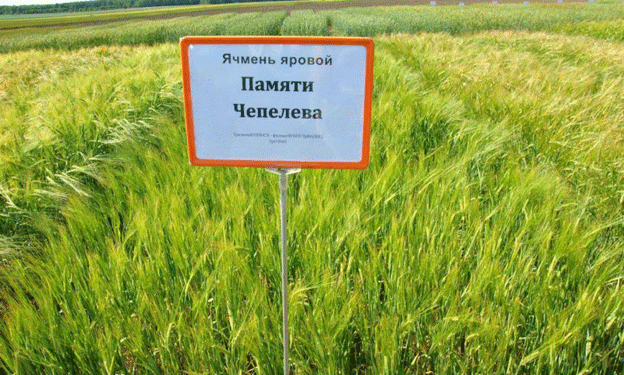In 2024, the Ural-bred barley variety “Memory of Chepelev” from the Ural Federal Agrarian Research Center became the leading variety in Russia’s spring barley seeding. With farmers planting over 600,000 hectares using 79,000 tons of seeds, this barley variety has proven to be highly productive and resilient, making it the top choice for Russia’s agricultural producers. This article explores the reasons behind its success, the role of Ural-based research in crop development, and the impact on Russia’s farming landscape.
Ural Barley: A Crop of High Yield and Resilience
Barley “Memory of Chepelev,” developed by the Ural Federal Agrarian Research Center, has gained immense popularity due to its high yield, disease resistance, and adaptability to various climates across Russia, particularly in the Ural, Volga, and Central regions. It has been widely adopted by farmers for its ability to withstand environmental challenges and produce a stable and profitable crop.
The variety’s success is not only attributed to its agricultural benefits but also its resistance to lodging (falling over) and diseases, making it a reliable and robust option for growers. These characteristics are especially vital for regions that face unpredictable weather patterns, such as the harsh winters and variable conditions in Russia’s southern and central parts.
Impact on Russian Agriculture
The widespread use of the “Memory of Chepelev” barley and Ural’s wheat variety “Iren” has made a significant impact on Russia’s agricultural sector. In 2024, over 106,000 tons of “Iren” wheat were planted across more than a million hectares, making it one of the top three most-seeded wheat varieties in Russia. These Ural-bred crops are now grown in 58 regions of the country, proving their versatility and value to Russian farmers.
The success of these varieties highlights the importance of agricultural research and breeding programs in developing crops that can thrive in Russia’s diverse climates. Local varieties like “Memory of Chepelev” barley and “Iren” wheat are not only supporting sustainable agriculture but also contributing to food security by providing reliable, high-yielding crops for domestic consumption.
Ural’s Role in Agricultural Research
The Ural Federal Agrarian Research Center has been instrumental in developing crops that meet the needs of Russian farmers. Experts such as Yuri Kiselyov, Roman Maksimov, Larisa Tolmacheva, and the legendary Vladimir Vorobyov have contributed to the success of these varieties. Their work in breeding crops that are both high-yielding and resistant to local pests and diseases has allowed Ural’s agricultural research to become a critical part of Russia’s national agricultural strategy.
In Sverdlovsk Oblast, for example, local varieties account for more than half of the region’s grain production, including 49% of the wheat fields, 30% of the barley fields, and approximately 70% of the oats. This dominance of local seed varieties in the region underscores the importance of scientific research in improving productivity and securing long-term agricultural sustainability.
The success of the “Memory of Chepelev” barley variety and the “Iren” wheat in Russia is a clear indication of the importance of local agricultural research and breeding programs. These varieties not only provide high yields and resilience in challenging climates but also contribute to the country’s efforts to maintain food security and self-sufficiency. The continued success of Ural’s breeding programs promises even more advancements in crop development, ensuring the future of Russian agriculture.
Error




